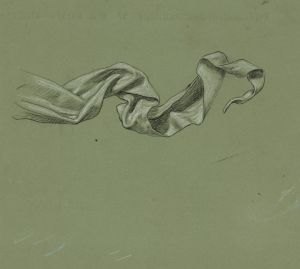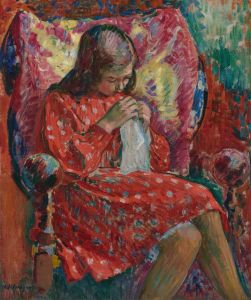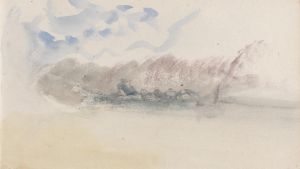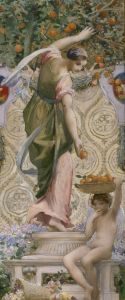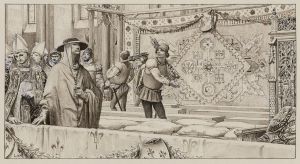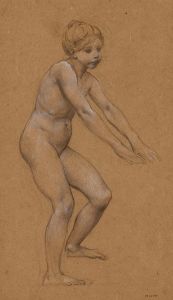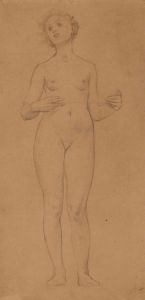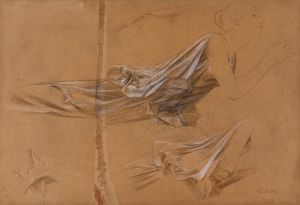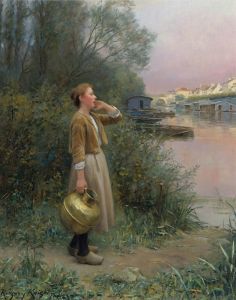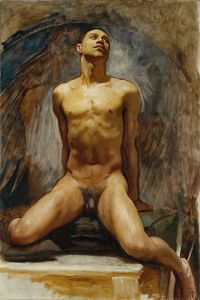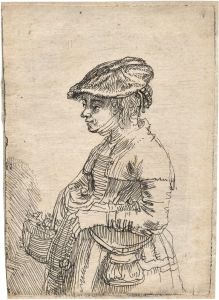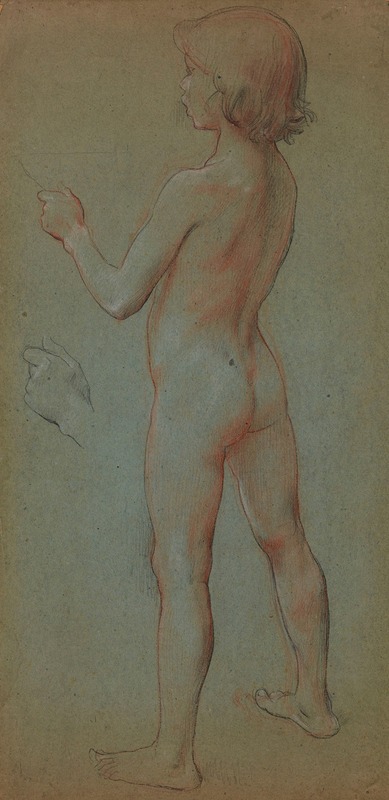
Etude pour le décor de l’Opéra Comique ; Fillette nue
A hand-painted replica of Luc-Olivier Merson’s masterpiece Etude pour le décor de l’Opéra Comique ; Fillette nue, meticulously crafted by professional artists to capture the true essence of the original. Each piece is created with museum-quality canvas and rare mineral pigments, carefully painted by experienced artists with delicate brushstrokes and rich, layered colors to perfectly recreate the texture of the original artwork. Unlike machine-printed reproductions, this hand-painted version brings the painting to life, infused with the artist’s emotions and skill in every stroke. Whether for personal collection or home decoration, it instantly elevates the artistic atmosphere of any space.
Luc-Olivier Merson was a notable French painter and illustrator, recognized for his contributions to the Symbolist movement in art. Born in Paris in 1846, Merson was a student of the École des Beaux-Arts and studied under the tutelage of Gustave Chassevent-Bacques and Isidore Pils. His works often reflect a meticulous attention to detail and a penchant for historical and allegorical themes.
One of Merson's works, "Etude pour le décor de l’Opéra Comique ; Fillette nue," is a study piece that showcases his skill in preparing for larger, more complex compositions. The title, which translates to "Study for the Decor of the Opéra Comique; Nude Girl," suggests that this piece was part of Merson's preparatory work for a project related to the Opéra Comique, a significant opera company in Paris known for its productions of French operas.
The study likely served as a preliminary exploration of form, composition, and thematic elements that Merson intended to incorporate into the final decor for the Opéra Comique. Such studies were common practice among artists of the time, allowing them to experiment with different ideas and refine their techniques before committing to the final work. Merson's ability to capture the human form with sensitivity and precision is evident in this study, reflecting his academic training and his interest in the human figure.
Merson's broader body of work includes religious and mythological subjects, and he was known for his ability to blend realism with imaginative elements. His paintings often feature a dreamlike quality, achieved through his use of light and shadow, as well as his attention to detail. In addition to his paintings, Merson was also a prolific illustrator, contributing to various publications and creating designs for postage stamps and banknotes.
Throughout his career, Merson received numerous accolades, including the prestigious Prix de Rome in 1869, which allowed him to study at the Villa Medici in Rome. His time in Italy influenced his artistic style, as he was exposed to the works of Renaissance masters and the rich cultural heritage of the region.
Merson's contributions to the arts were recognized during his lifetime, and he was appointed a member of the Académie des Beaux-Arts in 1906. His legacy continues to be appreciated for its technical skill and the unique blend of realism and symbolism that characterizes his work.
While specific details about "Etude pour le décor de l’Opéra Comique ; Fillette nue" are limited, the piece fits within the context of Merson's artistic endeavors and his role in the development of French art during the late 19th and early 20th centuries. His work remains a testament to the rich cultural and artistic milieu of his time, reflecting both the academic traditions and the innovative spirit that defined the era.





